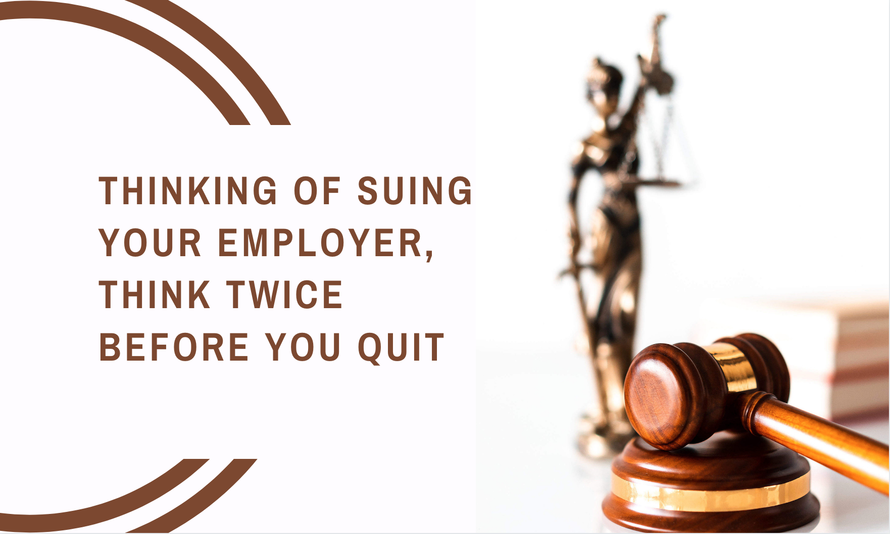Suing Your Employer in California – Things You Should Know
Sometimes, employees work in environments so intolerable that they quit their job and then sue their employer for wrongful termination. What these employees might not realize is the leverage they lose over their employer by voluntarily resigning.
Generally speaking, it’s very difficult for employees who quit to sue for wrongful termination; in such circumstances, the employee must prove that the employer intentionally made work miserable with the goal of coercing the employee to quit. This is referred to as constructive discharge.
Wrongful Termination in California
A constructive discharge occurs when an employer intentionally creates working conditions so intolerable that the employee has no option but to quit. To establish a constructive discharge, the employee must show:
(1) the actions and conditions that caused the employee to resign violated public policy;
(2) these actions and conditions were so intolerable at the time of the employee’s resignation that a reasonable person in the employee’s position would have resigned; and
(3) facts and circumstances showing that the employer knew of the intolerable actions and conditions and of their impact on the employee, and could have remedied the situation.
Merely describing something as “intolerable” does not justify invoking the doctrine of constructive discharge. For example, a reduction in pay may feel “intolerable” to the employee, but it is not “intolerable” enough to justify constructive discharge, under California law.
Nor does a demotion or shift reassignment, by itself, meet that definition. There’s a difference between unfair, and unlawful, treatment. And one-off instances of mistreatment or harassment do not allow an employee to quit and then sue for wrongful termination or retaliation.
The requirement that the conduct at-issue violate public policy limits the potential conduct that may fit this definition.
Circumstances that have been held to constitute a constructive discharge include a continuous pattern of discrimination extending over several years and including discriminatory promotional examinations, deprivation of training opportunities, having to meet a higher standard of performance than other employees of different races, and denial of assignments that could have led to advancement.
Wrongful Termination Retaliation Lawsuit
Constructive discharge is the only way an employee who is subject to this conduct can resign and still benefit from wrongful termination or retaliation litigation. These claims generally include punitive damages, which is money paid to the wronged employee to punish the employer.
The same rationale is true for employees who resign and seek unemployment benefits, which are unavailable unless the employee can show constructive discharge.
Wrongful Termination Retaliation Settlements
Hinging a future lawsuit on a theory of constructive discharge is a gamble. If you don’t meet the standard, you cannot sue for wrongful termination or retaliation after quitting.
Do not lose your rights to financial compensation by making uninformed, hasty decisions. Our employment law attorneys in california are happy to speak with you about these issues to help protect your future options and avenues of recourse against your employer.

